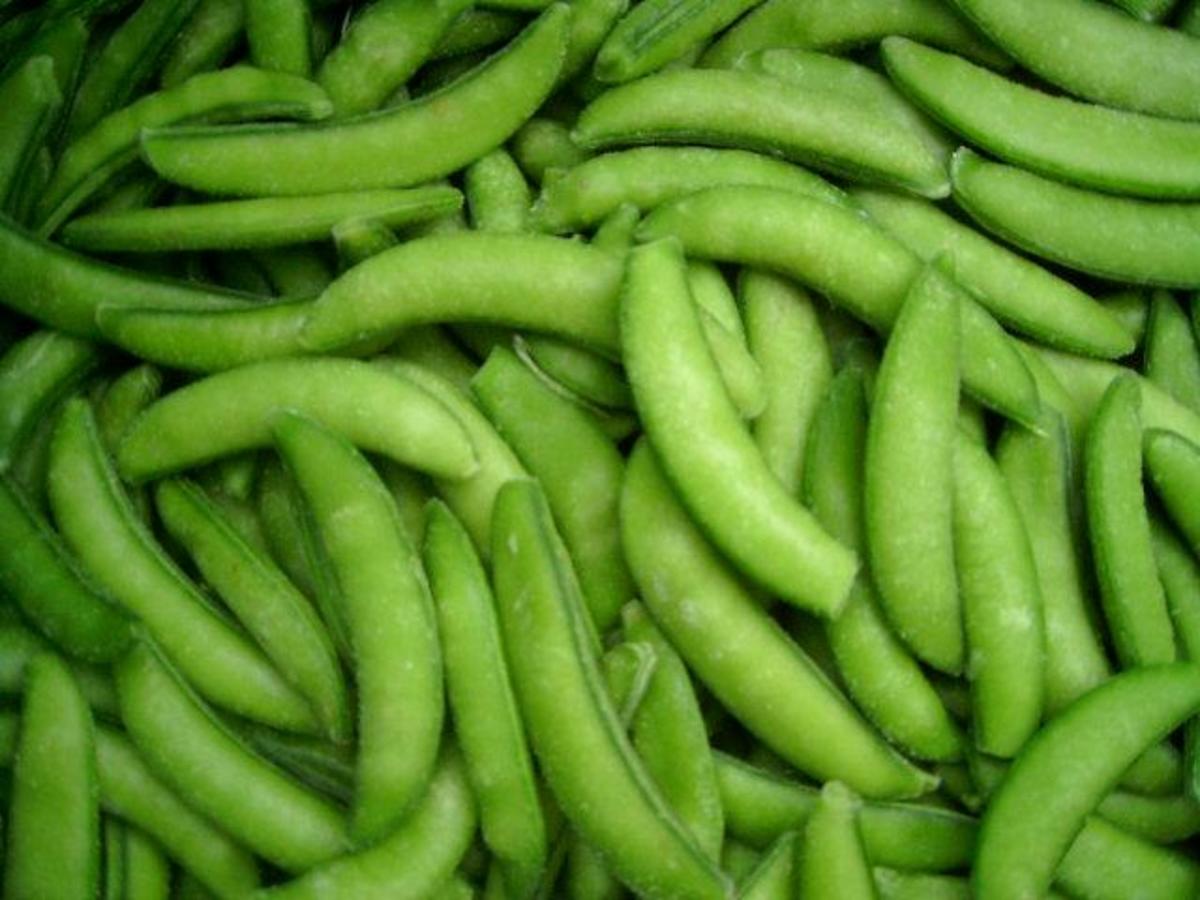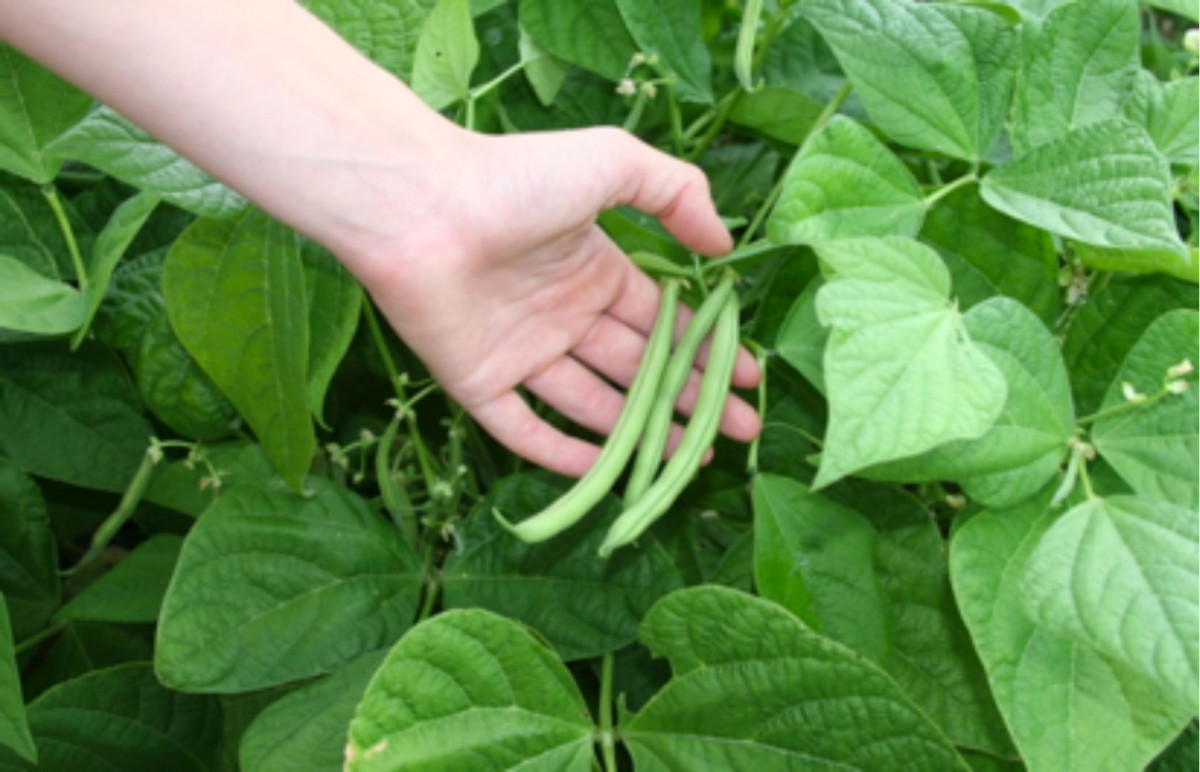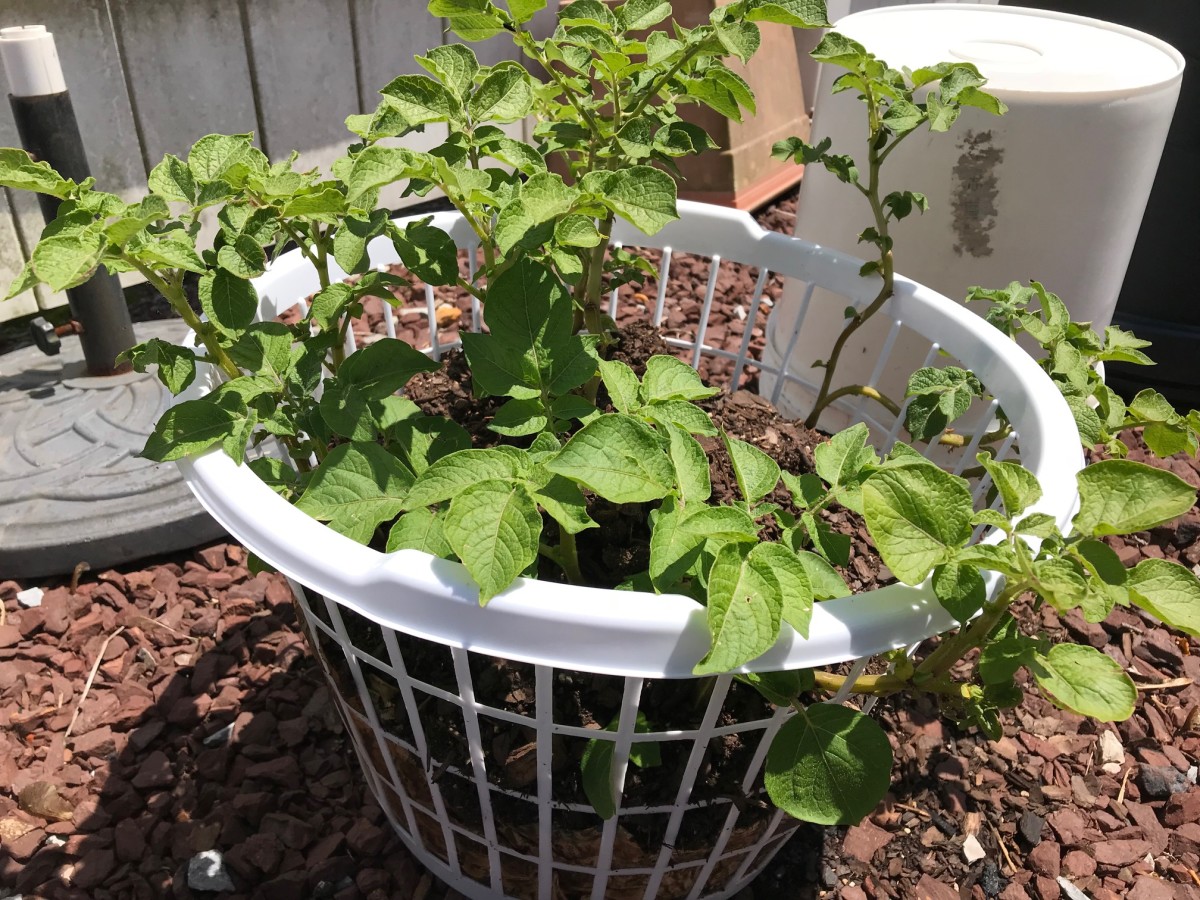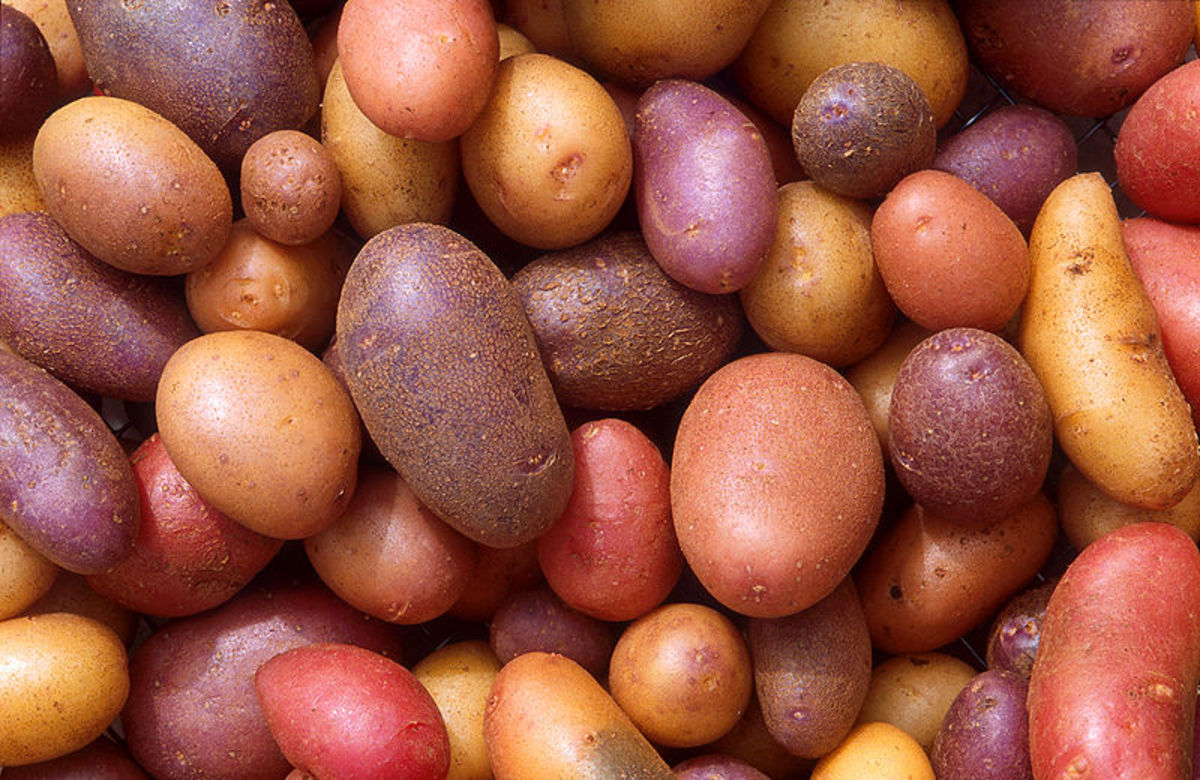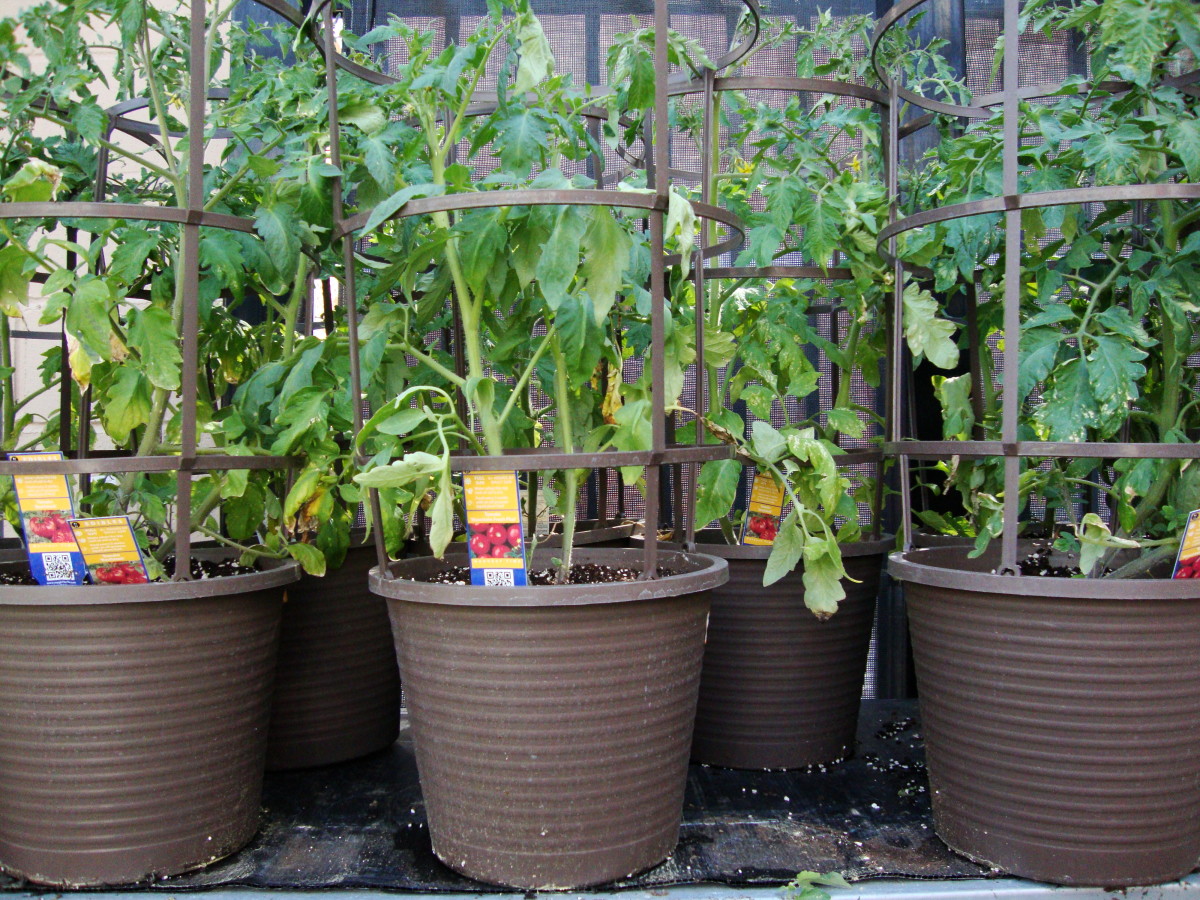Gardening 101 , Snap Beans, How To Grow Them And How To Cook Them.
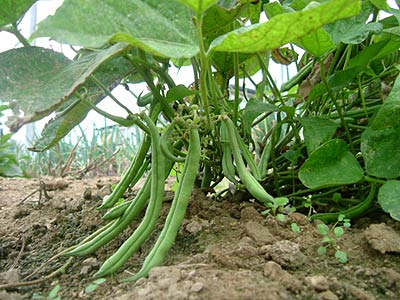
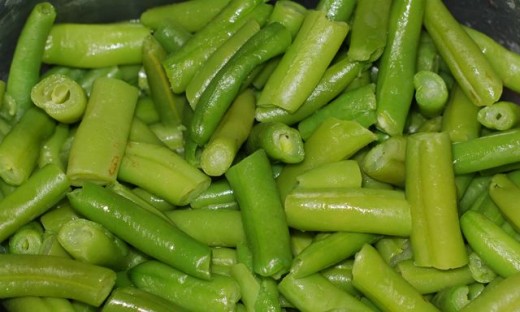
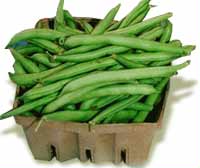
How To Grow Snap Beans
The snap bean is a favorite among gardeners and they are easy to grow and are very nutritious for you. In case you don't know both the green and yellow wax beans that you buy at the grocery store are snap beans and they can also be grown very easily in your garden. You can grow almost any snap beans as either bush beans or pole beans. Many people say that pole beans are a lot more flavorful, require less space to grow and are of course a lot easier to pick because they grow up on supports and you can usually just reach right out or up and pick the pole beans. With bush beans you have to reach down and pick them off the bushy plants they are growing on. If you have enough space try both kinds of beans.
Beans like peas, are legumes. Legumes absorb nitrogen from the air above them and add it to the soil they are growing in. When you prepare your soil for your snap beans you'll want to use 5-10-5 fertilizer and your going to want to apply it at the rate of four pounds per 100 square foot of garden space. You do not want to use a fertilizer with a high nitrogen count or you will end up with big leafy bean plants and few beans.
You should know that bean seeds are especially susceptible to fungus infections that cause bean seeds to rot so most bean seeds you will buy to plant are probably treated most of the time with a fungicide called Captan. Captan is highly poisonous so don't allow children to handle the bean seed. Some seed companies offer untreated seeds but you really should plant only treated seeds.
Planting Bush Beans
Before you plant your Bush Beans be sure that your soil is warm enough and dry enough. Most seed catalogs will tell you that the soil temperature needs to be at east 60 degrees. You want to be sure especially if your going to be plowing your middles with a garden tiller that you allow enough room between rows to allow you to run your garden tiller up and down between the rows. You will want the furrows you dig to plant your beans in to be one inch deep and your going to want to plant a seed every two to three inches.
Bush beans have a fairly short harvest period so if you want bush beans all summer plant bush beans every three weeks until about six weeks before the first frost is expected. The further south in the United States that you live the further you can push it. In North Carolina I have picked bush beans just before Thanksgiving.
When your bush bean plants are 6 inches tall sprinkle a 5-10-5 fertilizer on either side of the row. Be careful not to let the fertilizer touch the stalks or the leafs of the bush beans. You want to keep the soil moistened but be sure to water from sprinklers on the ground. And never touch your plants or work in your bush beans when the plants are wet. You can mulch your beans heavily to keep moisture in and weeds down.
Harvesting Bush Beans
For the best flavor pick your bush beans before they are mature. This is when the beans will snap easily and before the bean seeds inside the bean pods develop. If you want to keep each plant producing well for two to three weeks keep the bean pods picked off the plants as soon as you can so the bean plants will keep putting on more beans.
When you pick those first beans be gentle so that you don't damage the bean plant. Be careful when you pull off the beans that you don't damage the bean plant. If you damage the plant it may not put on more beans.
Planting Pole Beans
You can keep pole beans producing for much of the summer if you provide the pole beans with proper nutrients and keep the maturing beans picked off the pole beans. Before you plant pole beans your going to want to carefully prepare the soil by working in one half pound of 5-10-5 fertilizer per each 25 foot row of pole beans. Plant your pole beans when the soil is at least 60 degrees and there is no danger of frost.
Support Your Pole Beans
You will want to provide your pole beans with plenty of support and make sure that your pole beans support is not going to get blown down in a summer thunderstorm. You can grow pole beans on wooden teepees very easily and the teepees won't get blown down easily by wind.
You can also put up chicken wire and easily grow pole beans on it. They will attach them self's easily to chicken wire and if you secure and fasten the chicken wire up securely you won't have to worry about it falling down. If your pole beans have great support they will produce an abundant harvest of pole beans for you to enjoy all winter long.
When your pole bean plants begin to climb help them along by twisting the runners around their supports or tie them to it with cotton twine. Remember with pole beans and bush beans that no fertilizer ever be allowed to touch the plants. With pole beans you can expect to start harvesting the pole beans about two and a half months after the pole beans are planted.
What Can Go Wrong With Pole Beans Or Bush Beans
In some areas of the United States Japanese Beetles have become a major pest of snap beans of all types. If you see Japanese Beetles spray the plants with carbaryl being careful to follow the instructions on the label. You can also take steps at this time to prevent the Japanese Beetles from attacking next years crop of snap beans. Ask at your local garden center about milky disease spores. You inoculate the soil with the milky disease spores and they will kill the Japanese Beetle Grubs in the ground.
You also need to look out for Mexican bean beetles. They are black spotted insects that look similar to lady bugs. Them and their spiny yellow larva are also major pests of snap beans of all types. They will eat your bean plants and your beans and to get rid of them you will need to spray your bean plants with carbarly or malathion, or dust with rotenone. Be sure to read the label to find out when you can safely use the beans from the plants.
Varieties Of Snap Beans To Grow
If your wanting to grow bush beans there are several varieties of snap beans you can grow. Tendercrop and Bush Blue Lake are two of the best varieties of bush snap beans. And if your wanting to grow Snap Pole Beans you can't possibly go wrong with the variety of pole beans known as Kentucky Wonders.
I remember picking green beans as a small child and when I became an award winning Chef I developed a recipe I love to make with pole snap beans. I break the ends off the bean pods and then I soak my bean pods in Italian liquid dressing for at least four hours and then I carefully shave long ribbons off carrots and I tie up small bundles of the beans with a carrot ribbon and I spray a baking pan with vegetable cooking spray and sprinkle the bean bundles with salt and pepper and I cook the bundles in a pre heated 350 degree oven for about 45 minutes and then remove them from the oven. These little bundles of beans have a wonderful flavor and you want to be sure to use ground sea salt on your little bundles of pole beans. I serve these with all kinds of meat dishes and people love them.
Or you can break the beans small and cook them in a slow cooker with some salt pork, salt, pepper, and sugar and you'll have green beans that people will just simply love. You will end up with green beans like the cooked green beans in the photo above and I would bet you that people will just love the green beans cooked this way. You can cook them overnight in a slow cooker and serve them the next day. They are wonderful.
I hope that I'll have you planting snap beans real soon and I hope you cook and enjoy some real soon.
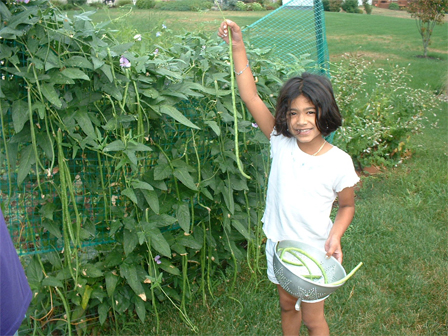
Have You Ever Seen Yard Long Pole Beans?
Gita is the best variety of yard long pole beans to grow. When you grow yard long beans people will be amazed that a bean this long is really real. But yes you can indeed grow yard long pole beans and the Gita variety of the yard long beans is especially sweet. You can use the yard long pole beans just like you would any other snap beans or pole beans and I just bet you'll love these wonderful beans. You can if you wish CLICK HERE and buy your own seeds to grow yard long pole beans. If you do buy and plant the yard long pole beans please let me know how they turn out for you.

